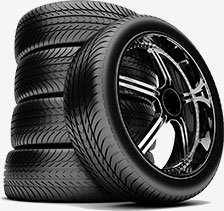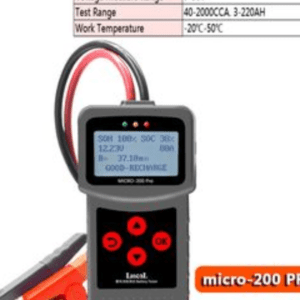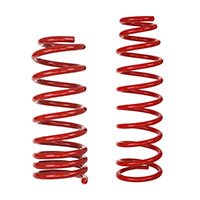What are the features and benefits of fog light
What are the features and benefits of fog light
What are the features and benefits of fog light?
Explore the power of fog lights! Discover how these essential automotive features enhance visibility, improve safety, and help you navigate through challenging weather conditions. Learn about their unique design, benefits, and proper usage tips in this informative blog post
Indeed, heavy fog, rain, and other weather conditions that reduce your visibility on the road can make driving difficult.
All these are why fog lights are essential additions to your vehicle. Note that this is entirely different from your regular headlights and has a very specific use.
Here Is How Fog Lights Work
For you to understand how fog lights work, we should first take a look at how fog works. Note that fog is a regular occurrence in many parts of the world, especially near large bodies of water. Whenever the conditions are right, tiny water droplets or ice crystals can float on air, just over the ground surface.
This acts like a cloud and blocks your view, the tiny water droplets or ice crystals will decrease your visibility. This happens via any reflecting light that hits them. And this makes driving through fog with headlights a frustrating and dangerous experience.
With Fog lights, you will take a different approach to all that water vapor hanging over the road. Though fog normally doesn’t touch the ground but hovers about 18 inches over the ground surface.
Because of the low placement of fog lights on a vehicle lets the beam light hit the road without interference. Note that fog lights do not have the reach of headlights, but they light up enough on the road ahead. Because fog lights aren’t just reflecting light back, other drivers are more aware of your presence out on the road.
The Differences Between Driving Lights And Fog Lights
A driving light is an ambiguous term that means headlights or auxiliary lighting like fog lights or even turn signals. But driving lights refers to additional large lights placed upfront, like those found on rally cars and off-road vehicles.
Though Fog lights differ from driving lights in the internal construction and intended placement. Fog light has a beam cutoff angle at the top of the housing, designed to broadcast light only onto the street. Also, another common element is yellow lenses, yellow bulbs, or both. A lot of drivers assume all fog lights are yellow, but they don’t have to be. One major theory is that yellow light is a longer wavelength and can penetrate a thicker atmosphere.
So when do I Use Fog Lights
Fog lights are useful for seeing road markings, but they will not help you see into the fog. This means that they are really only helpful when driving at relatively low speeds.
Although there are no regulations for when you should use your fog lamps. But it’s recommended that you only activate them during certain situations.
What are the features and benefits of fog light?
Indeed, with winter’s inevitable onslaught of snow, freezing rain, and fog, drivers should know that they will face traction.
Fog lights are very important and are a recognizable part of any vehicle’s front bumper and fascia. Normally, fog lights are mounted lower on a vehicle, often directly in front of the wheel well.
Fog light looks like small headlights and can be stylishly incorporated into the exterior front-end design of a vehicle. Even though the design may differ, their purpose is the same, they help drivers gain visibility in poor weather.
Car manufacturers recommend that you only activate fog light during certain situations like the ones listed below:
- During Fog And due to their low placement, the light that they produce is able to hit the ground underneath, rather than going straight into the fog and simply bouncing back like the light from your headlamps.
During Heavy Rain
Your fog lights can also offer better visibility under heavy rainfall. The high and low beams produce glare when used in heavy rainfall, which is why you need fog light to help you see the road in front of you.
During Dusty Storms
Sometimes sand or dust storms can occur in certain states, particularly in Arizona and New Mexico.
You are not supposed to drive when faced with this frightening phenomenon, but you will still need to maneuver your vehicle to safety while you wait for the storm to pass.
Here is where fog light can be very helpful. It can help you navigate the road in front of you as you pull out of the highway or street.
Please remember that fog lights only illuminate the part of the road directly in front of your car. Just as we mentioned earlier, they may only be used in conjunction with your headlights and never alone.
Conclusion on what is the features and benefits of fog light
Basically, you can use your fog lights when you’re driving in a condition similar to a low-visibility setting. It could be you’re driving in a very heavy rain, for instance, or through a dusty storm.
You are to understand that there may be road rules covering the use of fog lights in every state. Florida for example, there’s a law that disallows the use of fog lights and other auxiliary lights when other cars are on the road, except in foggy conditions.
While in Oregon, there is a law that prohibits the uses of fog lights when within 500 feet of an oncoming vehicle or within 350 feet if you are behind another car. Please note that this is to avoid the possibility of blinding other drivers with the glare.




























0 comments on “What are the features and benefits of fog light”
A WordPress Commenter
Hi, this is a comment.
To get started with moderating, editing, and deleting comments, please visit the Comments screen in the dashboard.
Commenter avatars come from Gravatar.
enovathemes
Duis autem vel eum iriure dolor in hendrerit in vulputate velit esse molestie consequat, vel illum dolore eu feugiat nulla facilisis at vero eros et accumsan et iusto odio dignissim qui blandit praesent luptatum zzril delenit augue duis dolore te feugait nulla facilisi.